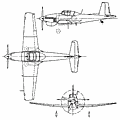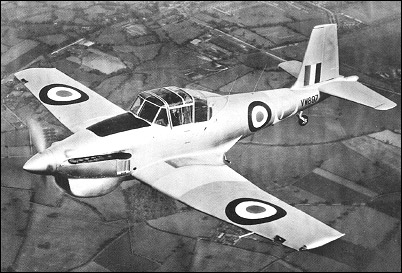|
| Originally designed as an all-purpose advanced trainer to be fitted with an Armstrong Siddeley Mamba or Rolls-Royce Dart turboprop engine. Three versions were produced: Balliol T.1 three-seater with a Mamba engine, first flown in prototype form on 24 March 1948 to become the first aeroplane in the world to fly solely on turbo-prop power; Balliol T.2 two-seater, produced for the RAF (162) with a 928kW Rolls-Royce Merlin 35 piston engine; and Sea Balliol T.21 for the Royal Navy with deck-landing capability (30 built).
 | A three-view drawing (800 x 800) |
| MODEL | T.1 |
| ENGINE | 1 x 1000shp Armstrong Siddeley Mamba |
| WEIGHTS |
| Take-off weight | 3562 kg | 7853 lb |
| Empty weight | 2724 kg | 6005 lb |
| DIMENSIONS |
| Wingspan | 11.99 m | 39 ft 4 in |
| Length | 11.13 m | 37 ft 6 in |
| Height | 3.23 m | 11 ft 7 in |
| Wing area | 23.23 m2 | 250.05 sq ft |
| PERFORMANCE |
| Max. speed | 494 km/h | 307 mph |
| Ceiling | 11201 m | 36750 ft |
| Ray Parish, e-mail, 10.01.2007 17:38 When I was stationed at RAF Middle Wallop in 1955, I used to hitch rides in the Station Balliols. We did aerobatics, practice interceptions and I thoroughly enjoyed my time in them. Taking off on grass was a bit bumpy and it was a relief to get airborne. I was allowed the opportunity to handle the controls and that was most enjoyable. There are a number of tales I could tell about my days in Balliols. Middle Wallop at that time was the RAF's School of Control and Reporting which is why I was there doing my trade training. I later transferred to the Eastern SOC. reply |
|
Do you have any comments?
|
| 
COMPANY
PROFILE
All the World's Rotorcraft
|








